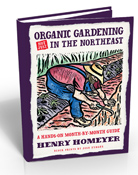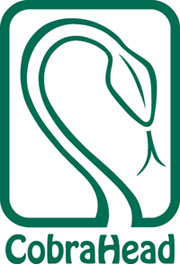Getting the Garden Ready
Posted on Thursday, March 13, 2025 · Leave a Comment
As the saying goes, “Spring has sprung.” In my garden, daffodils are blooming and tulips are on the way. My peas are planted. But how do you know when to plant your veggies and tender annual flowers? It’s not just about the last frost of the spring, you need to think about which plants can survive and thrive in cold, wet soil and which would rather wait to get planted until late May – or even mid-June.
In the vegetable garden, tomatoes, peppers and eggplants are the prima donnas. I generally wait until June 10 at 9 AM to plant them. Or something like that. I shape up my wide, raised beds well before I plant, allowing the soil to dry out and get warmed up. I rake off the straw or leaves I used to protect the soil from erosion over the winter. I like to work in aged compost well before planting time.
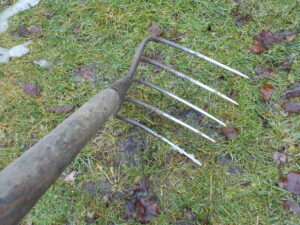
This potato rake is great for preparing soil for planting
Peas and spinach are very cold hardy and can survive frosts. Root crop like carrots, beets, onions and potatoes prefer warm soil for growing, but will tolerate cool soils and won’t get killed by a late frost even if their leaves are up. But in my opinion, almost any plant would prefer to grow in soil that is at least 50 degrees.
Whether you start your tomato seedlings indoors or buy plants from a garden center, you should “harden them off.” They need to be introduced to sun and wind in small doses at first so they don’t get sunburned or dehydrated after being pampered for weeks in a greenhouse or on a kitchen windowsill. This process will take 5 days or so, but if you don’t do it, you will either kill your baby peppers or stunt their growth for 2 weeks or more while they recover.
Start by putting your plants outside in a place protected from the wind that only gets morning sun. Give them two hours of morning sun the first day, then bring them back inside or well out of the sun’ rays. Increase the time outside each day and by day 3 give them some afternoon sun, too. On day 5 they should be okay outside all day, and after that you can plant them.
What about fertilizer? I generally don’t give annual flowers like cosmos or zinnias any at all. Soluble nitrogen found in chemical fertilizers will make them grow tall, but delay flowering. Of the vegetables, only peppers need no fertilizer, but in my opinion no vegetables should get chemicals of any kind – including fertilizer and pesticides.
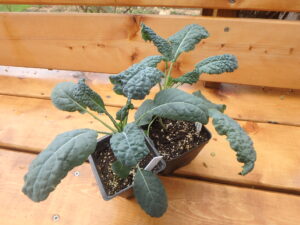
This kale was started indoors on Feb. 22 and needs to be hardened off before going in the ground in early May
Newly planted seedlings and seeds need to be kept in lightly moist soil, A seedling that cracks open its husk to send up a shoot may not make it to the soil surface if the soil is too dry. So check your garden every day. And if your tomato starts look limp or drooping, water immediately – even if it means going to work late. Just email me, I’ll send an excuse to your boss to keep you out of trouble.
There are many ways to keep your plants lightly moist – either in the vegetable or flower garden. One way is to set up a drip irrigation system. I’ve had good luck installing soaker hoses – rubber hoses that leak slowly though pores. I’ve bought the “Snip and Drip” system from Gardeners Supply.
The basic kit comes with the hose and T-junctions and fittings to install it. Then, if you buy a watering timer the system will come on a schedule you determine. I’ve used many types of timers during my time as a garden designer and installer. My advice? Get the simplest one you can get.
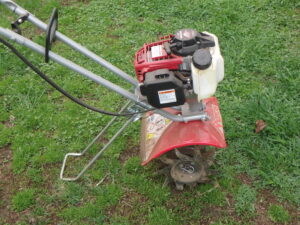
I no longer recommend rototillers
What about rototillers? Should you rent or buy one, or not? I used one for years until someone more knowledgeable than me explained why he didn’t: rototillers seriously disturb the microbes in the soil. They break up useful fungal networks that support your plants. They make a bed clean and neat, but in fact, have only sliced up the weeds and buried them. One invasive root becomes multiple roots and can move them further from their initial location. I have a friend who rototilled a small patch of horseradish and turned the bed into a large bed full of horseradish he could never eliminate.
So how do I prepare my soil? I use a 5-tined old fashioned potato rake that loosens the soil as I pull it through the soil. Or you can use an ordinary garden fork to loosen the soil if it is a heavy clay, and then finish it off at planting time with a good hand tool like a CobraHead weeder. You can use a hoe to pull soil from the walkways up to form mounded beds. And as you improve your soil with compost each year it will get easier to prepare nice, fluffy beds rich in organic matter.
Gardening is fun. It is rewarding, too: tomatoes and lettuce taste better when eaten the day they were picked. The exercise will make you healthy, too. Just don’t work so hard you get blisters and sunburn. Ease yourself into gardening – just like you harden off your plants.
Henry is an organic
gardener who has been fussing around in
gardens for about 75 years. He is the author of 4
gardening books. His email is
henry.homeyer@comcast.net.


